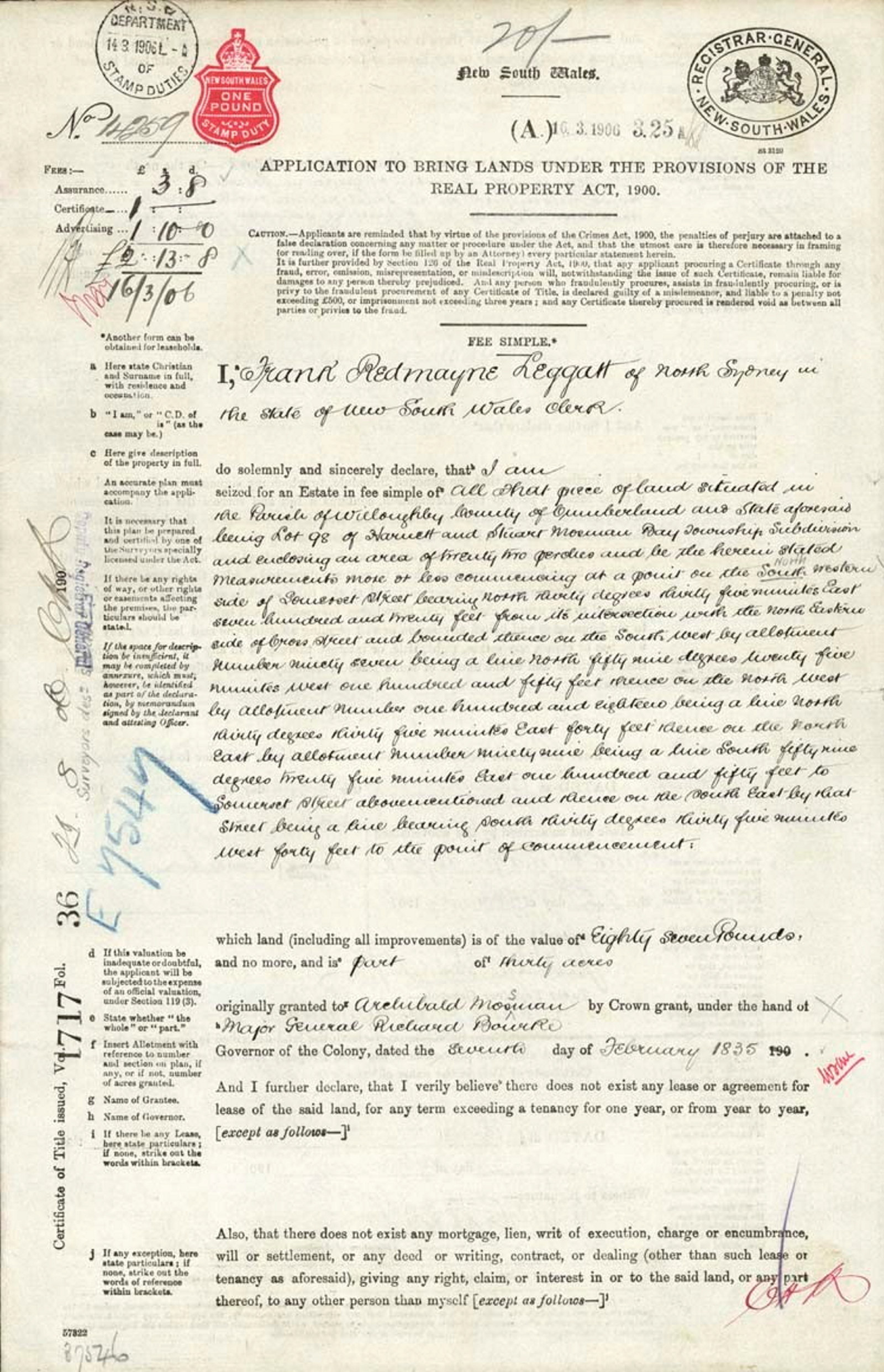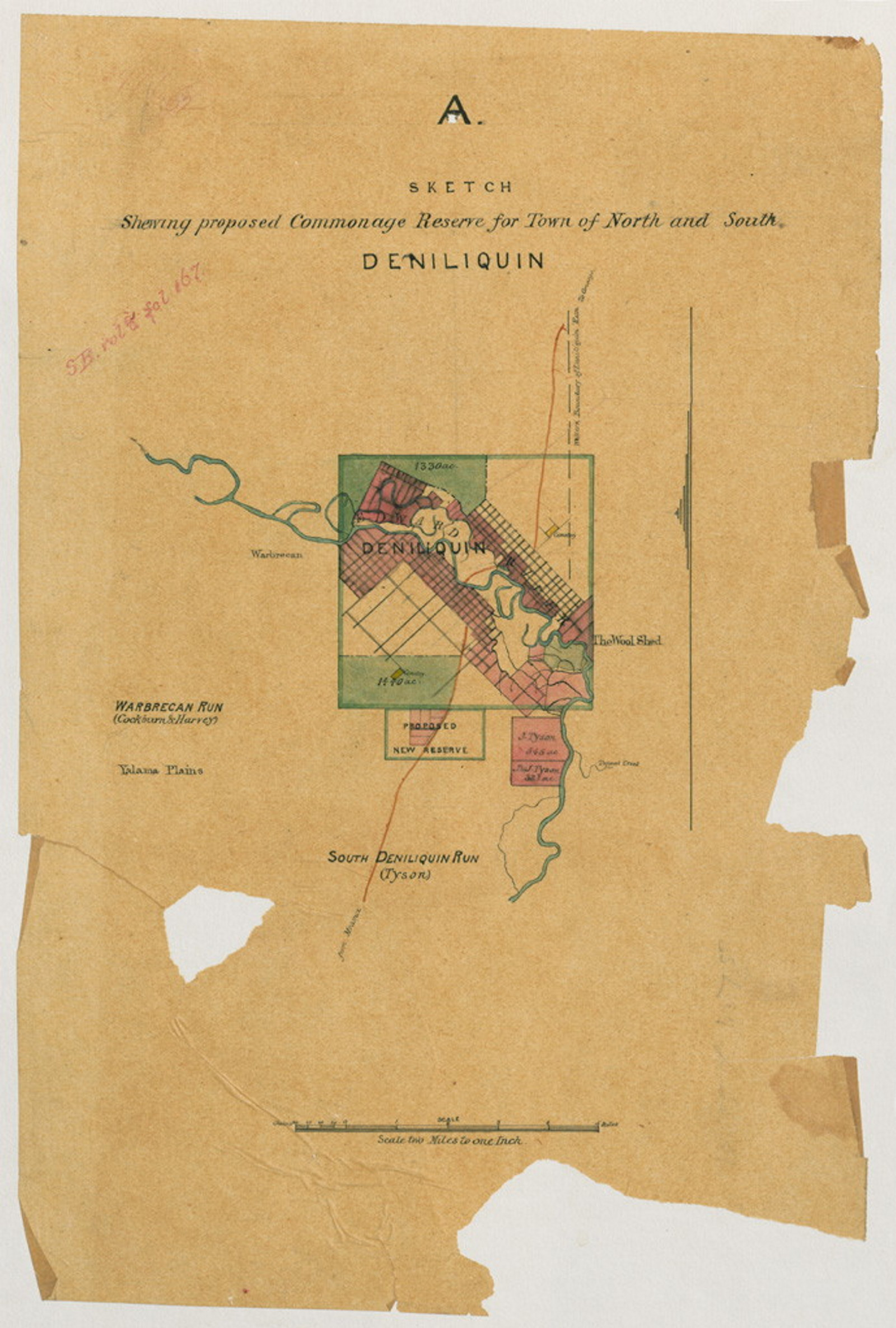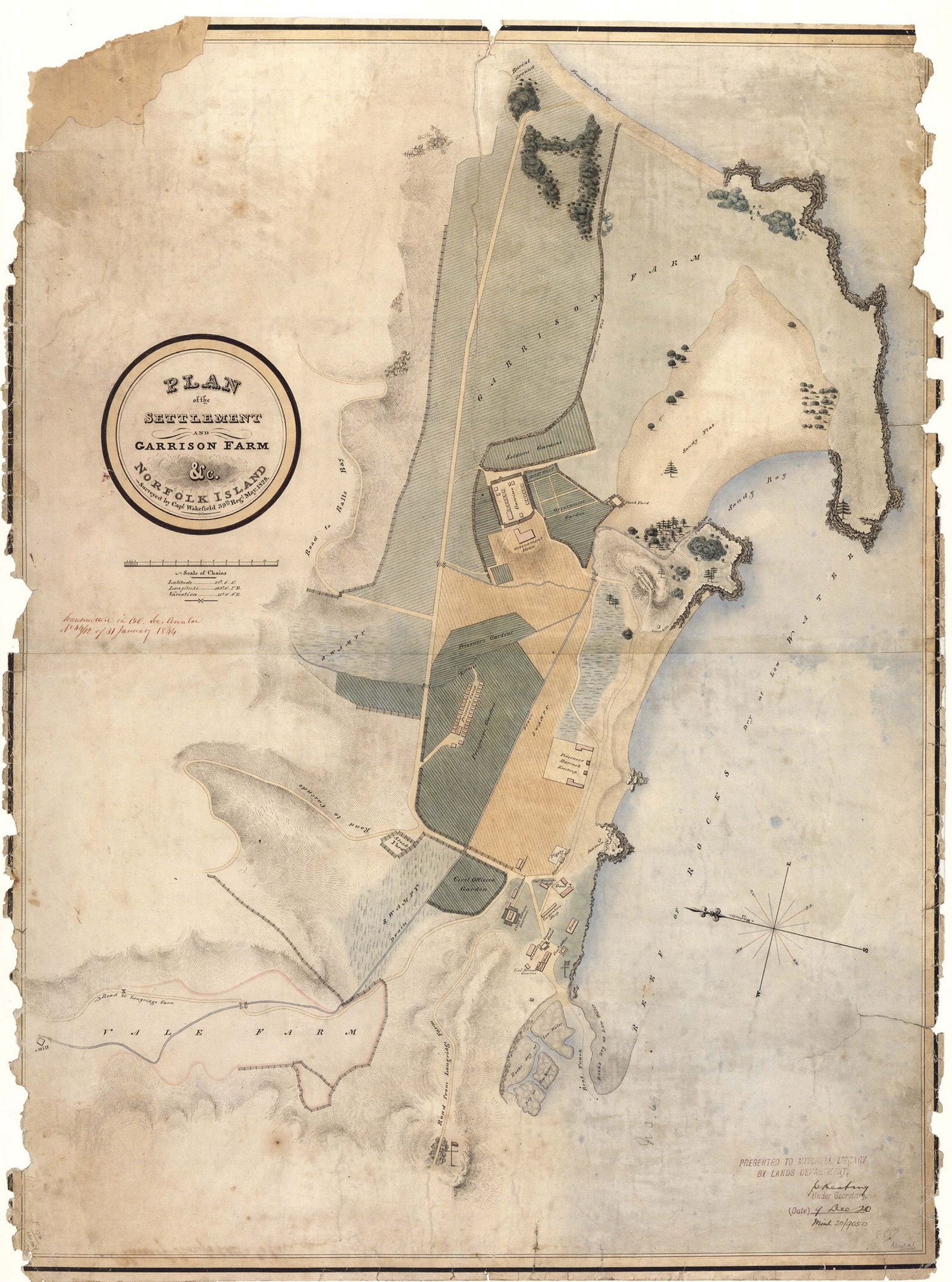Conditional purchase of crown land guide
This Guide provides an historical background on the conditional purchase scheme in NSW from 1862 to 1951, also known as 'free selection before survey' along with a list of the major record series and step-by-step guidance on how to access them.
What is Conditional Purchase?
A Conditional purchase was a way of obtaining a Crown Grant for land before it was surveyed. Established in 1861, the grant was dependent on a set of conditions being met. The purchase was conditional on:
- the area being limited to 40 to 320 acres at £1 per acre
- paying a deposit of one quarter of the purchase price
- adding improvements to the value of £1 per acre
- the selector residing on the land, and
- occupying the land for three years
It was also known as 'free selection before survey'.
Useful definitions and abbreviations
Definitions
Term | Definition |
|---|---|
Alienation | Transfer of ownership of Crown lands to private individuals or bodies |
Crown land | Land owned by the Government |
Grant | Method of land alienation; either for free or by purchase |
Occupation | Using Crown land, usually for a fee, but without ownership. Limited rights over the land |
Select | To take up land under conditional purchase |
Selection | The land subject to a conditional purchase |
Selector | The person purchasing the land |
Common abbreviations found in the records
Abbreviation | Description |
|---|---|
ACP | Additional Conditional Purchase |
ACPL | Additional Conditional Purchase Lease |
ANRCP | Additional Non-Residential Conditional Purchase |
CL | Conditional Lease |
CP | Conditional Purchase |
CPL | Conditional Purchase Lease |
CS | Conditional Sale |
MCP | Mining Conditional Purchase |
NRCP | Non-Residential Conditional Purchase |
SCPL | Special Conditional Purchase Lease |
Historical background
1859 - Establishment of the Lands Department
On 30 September 1859 the Lands Department was established, with John Robertson as the first Secretary for Lands. The Department was responsible for the alienation and occupation of all Crown Lands.
1861 - Release of Crown land for purchase
In 1861 Crown land management was reformed with two Acts, which included the introduction of John Robertson's scheme of 'free selection before survey'. The Crown Lands Alienation Act 1861 dealt with the sale of land and the Crown Lands Occupation Act 1861 allowed for the leasing of Crown Land.
Previously land in settled districts had been sold by auction while vast areas of unsettled grazing lands were leased and licensed to mainly pastoralists. The new legislation made all leasehold land in the Colony available for selection and sale.
The legislation also abolished land distinctions used in the Colony, such as settled and unsettled districts, and introduced new land divisions, such as town land, suburban land, first class settled districts and second class settled districts.
Details of the 'Conditional purchase' scheme or 'Free selection before survey'
What land was available for conditional purchase?
The land available for purchase had to be a specified distance from populated areas. In effect Crown land was not available for conditional purchase if it was town or suburban land, within a proclaimed gold field, under lease to another person for mining purposes, or reserved for the site of a town, village or for water supply.
In addition, to protect the public estate, both the Lands Department and Survey Office could proclaim areas as reserves. The majority of requests for reserves, which effectively quarantined the land from purchase, came from pastoralists. Reserves were proclaimed and gazetted before they were marked out and charted.
Between 1861 and 1883 there were three separate validating Acts assisting selectors who had unwittingly settled on reserves and other lands not open to purchase.
Where more than one purchaser selected the same land the Act provided mechanisms including arbitration to settle ownership. Crown Land bought by conditional purchase and abandoned in less than 3 years after purchase was declared forfeited in the Government Gazette and sold at auction.
Paying for the purchase
After three years the balance of the purchase had to be paid to the Colonial Treasurer together with a declaration that improvements had been undertaken on the land. There was an interest rate of 5% per annum.
Payments could be made from year to year. In practice the balance of the purchase price, with interest, could be paid over an extended period. It was not unusual for 20 or 30 years to pass before freehold title was eventually granted.
Administration of the scheme
While 'selection claims' could be lodged at local Land Offices, the administration of the Lands Department was centralised in Sydney. Land selections were processed slowly with long delays due to backlogs, distance, inaccurate survey maps, partial decisions, and reappraisals.
The Department's work was further complicated with the practices of 'dummying', where a person would select an area only to sell by pre-arrangement to another party and 'peacocking', where the best part of a run was taken to block access to water.
1884 - Conditional leaseholds introduced
The Crown Lands Act 1884 made provision for conditional leaseholds for land adjoining existing conditional purchases. They were not to exceed three times the area of the conditional purchase. The Act divided the State into three divisions, Eastern, Central and Western.
The leaseholds and purchases together could not exceed 1280 acres in the Eastern Division and 2560 acres in the Central Division. The selector also gained the right to purchase the area of the conditional lease within five years. The Conditional Purchasers' Relief Act 1896 (60 Vic. No. 2) reduced annual payments on conditional purchases and provided for the conversion of conditional purchases and conditional leases into homestead selections.
1901 - Control of the Western Division
The Western Lands Act of 1901 placed the Western Division under the control first of a Board, and from 1934 a Commission or Commissioner, responsible to the Minister for Lands.
1905 - Leases converted to purchases
The Crown Lands Amendment Act of 1905 made provision for conditional leases to be converted into conditional purchases.
1913 - Consolidation of land legislation
The Crown Lands Consolidation Act 1913 consolidated the provisions of all Acts relating to Crown lands-thirty-six in number-passed since 1884. The Act set the same maximum area that could be conditionally purchased in the Eastern and Central Divisions.
The minimum area of a conditional purchase or lease remained 40 acres. Selectors could be any male over the age of 16 years or any female over the age of 18 years.
There were conditions relating to married women acquiring or holding conditional purchases or leases. It was possible to transfer a conditional purchase to another person provided the Crown Land Agent was notified.
1989 - No new conditional purchases
The Crown Lands (Continued Tenures) Act 1989 provided for the continuation of incomplete conditional purchases (whether ordinary, non-residential, for mining purposes or within a special area), including an original and an additional conditional purchase made under the Crown Lands Acts and also a conditional purchase made under the Western Lands Act1901.
It also provided for the continuation of perpetual conditional leases and conditional purchase leases plus term conditional leases under the 1913 Act. Hence no new conditional purchases have been created since 1989 although deeds may have been issued after that date for existing conditional purchases.
Major record series for conditional purchase
The Department of Lands recorded the management of the conditional purchase scheme through a series of registers and associated correspondence. The registers provide basic details of the purchase and provide the numbers allocated to individual letters relating to a purchase. These numbers, known as letter numbers, are used to locate the correspondence through a series of correspondence registers.
Lands Department, Conditional Sales, later Sales Branch
Series | Title | Dates |
|---|---|---|
Conditional purchase registers From 1862-1874 the registers are arranged by year and then by number of conditional purchase. After 1874 the registers are arranged by land district (except Wyalong). Indexes for 1862-65 [7/2698-709] are at Fiche 5278-5286, 5308-5316, 5941-5954. Includes a cumulative alphabetical index for 1862-165. Yearly indexes by name, CP number and by County. | 1862-1911 |
Lands Department, Accounts Branch
Series | Title | Dates |
|---|---|---|
Conditional purchase registers These registers show how land was administered and the regular or irregular payment of the required installments. | 1862-1936 |
Lands Department, Deeds Branch
Series | Title | Dates |
|---|---|---|
Registers of grants of land purchased by conditional sale without competition These registers record deed numbers for all completed conditional land purchases. | 1865-1970 |
Treasury
Series | Title | Dates |
|---|---|---|
Balances and interest on conditional purchases These volumes show the amounts paid for balances and interest on the conditional purchase of land. The arrangement is alphabetical by land district. | 1862-1888 | |
Conditional purchases refund register This register shows amounts passed for refund on conditional purchases of land listed under name of claimant, district, account on which amount is claimed and date passed. For registers of the various land districts, check records of the Crown Lands Agents | 12 Jul 1899-c. Mar 1906 |
Major sources for conditional leases
Lands Department, Conditional Sales, later Sales Branch
Series | Title | Dates |
|---|---|---|
Conditional lease index This indexes the next series | 1871-c.1914 | |
Conditional lease registers These volumes record conditional leases by Land District. Originally there was one numerical sequence for conditional leases from 1885 to 1904 (1 to approximately 37,000). From 1905 an annual single number for each Land District was introduced. | 1885-1910 | |
Conditional purchase lease registers These indexed volumes record conditional purchase leases under the Land Act 1905. | 1906-1911 |
Lands Department, Head Office
Series | Title | Dates |
|---|---|---|
Conditional lease registers These registers show how land was administered and the regular or irregular payment of the required installments. | 1885-1934 |
How to research conditional purchases
Tip - When conducting research:
- research ONE conditional purchase at a time, and
- follow all the steps carefully taking clear and accurate notes.
Step by Step
Further information
Dr Terry Kass, Unlocking Land: A Guide to Crown Land Records held at State Archives NSW. Sydney, 2019
John Ferry, 'New South Wales land records and family history', pages 115-124 in International Congress on Family History (1st: 1988: Sydney, N.S.W.); Australasian Congress on Genealogy and Heraldry (5th: 1988: Sydney, N.S.W); Australian Federation of Family History Organisations; Society of Australian Genealogists.
A selection of papers, first International Congress on Family History and fifth Australasian Congress on Genealogy and Heraldry, Sydney, October 1988. [Blackburn, Vic.], Australasian Federation of Family History Organisations & Society of Australian Genealogists, 1988.
A Review of Crown Lands Administration in New South Wales. 3rd ed. Minister for Lands, 1972.
Further information on records may be identified in our catalogue under Activity No. 189, Crown Land Alienation and under the agencies:
Further information relating to conditional purchases may also be found in the New South Wales Government Gazette. A numerical index to completed conditional purchases is held by the NSW Department of Lands.
Land guides
Browse allLand records available at NSW State Archives
A joint initiative between NSW State Archives and Lands and Property Information (LPI) to provide online access to a number of historical land title records was announced in November 2010. Using the popular search tool PIXEL (now HLRV) researchers can now search and view Old Form Torrens Title Registers, Charting Maps and Crown Plans online

Primary application packets guide
The Real Property Act, 1862 established a system whereby owners could convert land granted prior to 1863 to Real Property Act title. This is done by what is called a Primary Application

Commissioners of Crown Lands guide
A brief overview of the major sources and key related series we hold that relate to the Commissioners of Crown Lands

County & parish maps guide
An overview of county, parish and town/village maps created by the Department of Lands and its predecessors